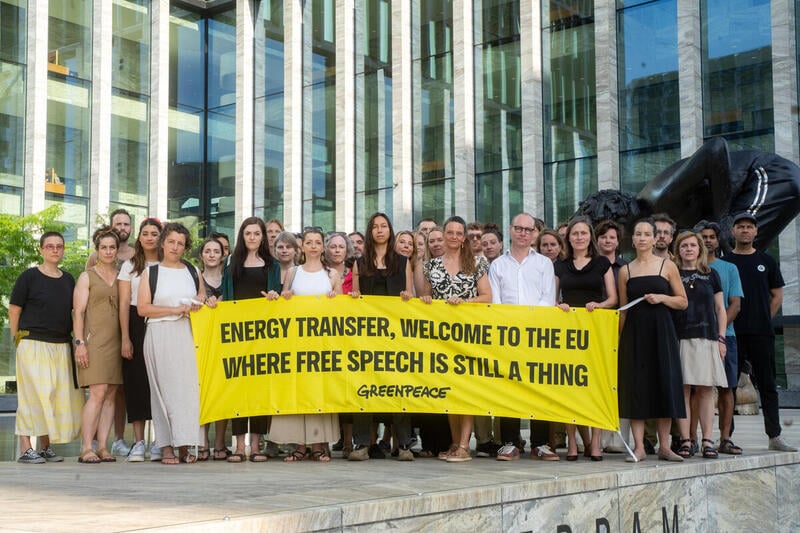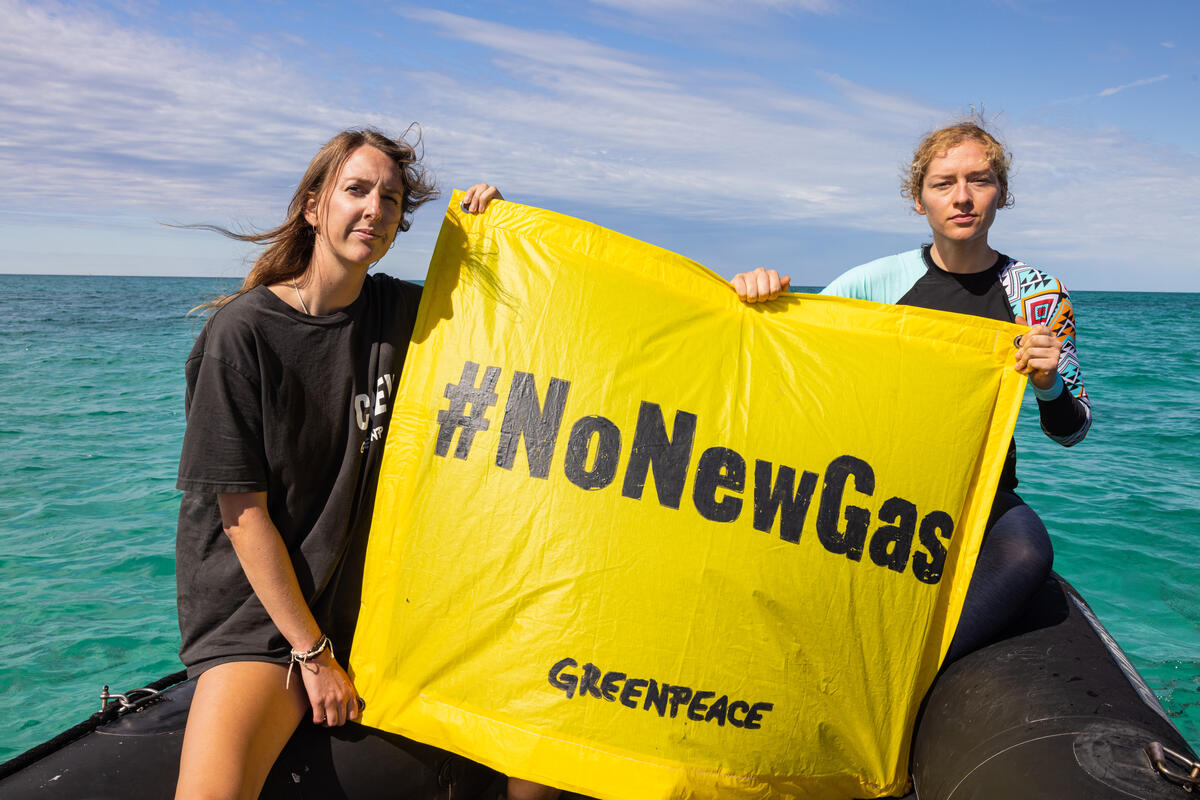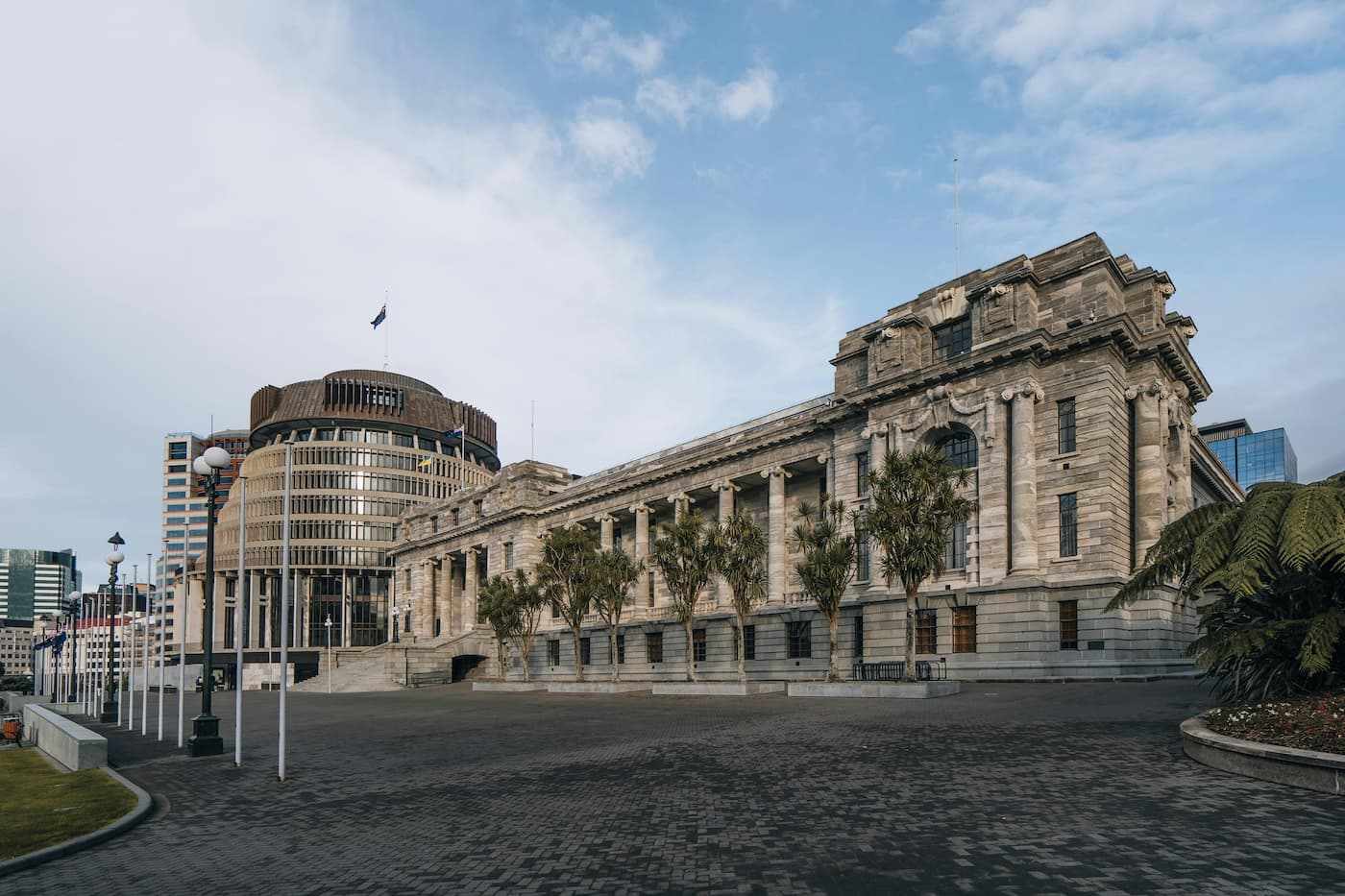It has been a year since the formation of the New Zealand Coalition Government. It has been a year of the most anti-environment extremist Government in living memory, engaged in a war on nature.
The current Government has all the evidence of a climate and biodiversity crisis and is deliberately choosing to make it worse.
The scale of the attack on the environment is unprecedented. There have been so many anti-environment initiatives across so many domains that it is hard to keep track of them all. In fact, one of the purposes of this article is to list most of them.
It is sombre reading. But if we do not record the war on nature, we can’t resist it properly. Nor can we undo it properly in the future.
Table of contents
- Fast track approvals bill is a fast track to destruction
- Dismantling freshwater protections
- Removal of requirement to identify important areas of biodiversity
- Transport – more motorways, fewer cycleways and less public transport
- The war on dolphins, seals and marine life
- Increased climate pollution
- Conclusions
1. Fast track approvals bill is a fast-track to destruction
The premier vehicle for the government’s War on Nature is the Fast Track Approvals Bill. This was introduced in March 2024 and currently making its way through Parliament.
In August, the Government announced that the Bill would be amended after the environment movement mobilised against it, including a 20,000 strong march in Auckland. But even the amended bill is fatally flawed.
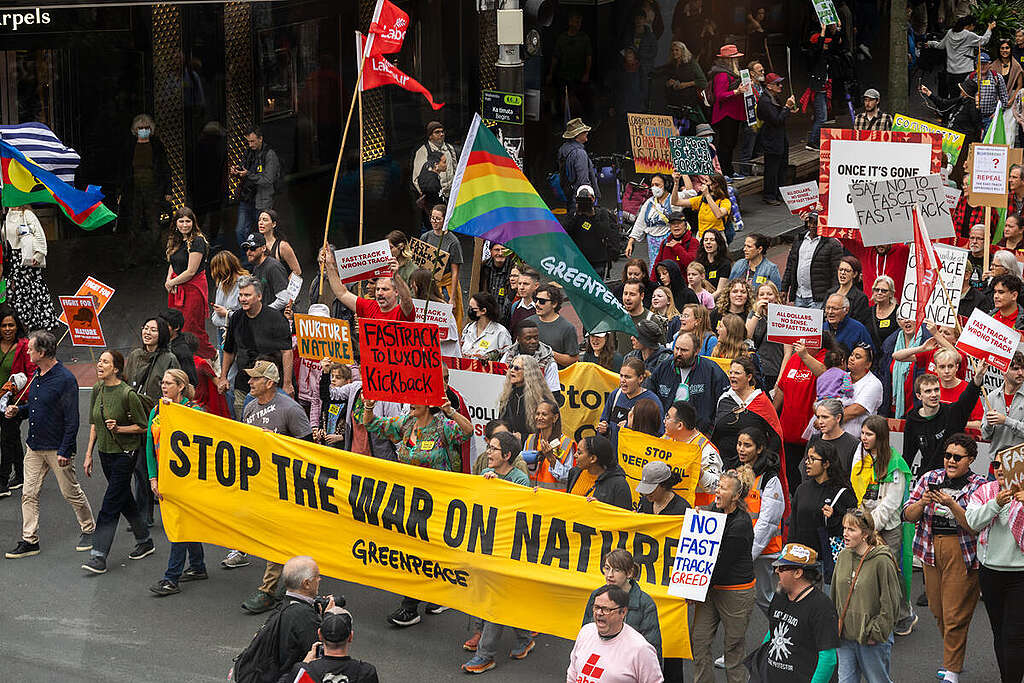
In October, the Government released the list of 149 projects it plans to fast-track. These projects will be listed in the schedule of the bill. They were not made public prior to the select committee process, so the public has never had the opportunity to make submissions about them. They include seabed mining, coal mines, housing on flood plains, irrigation projects to expand intensive dairying and plenty of links to National Party donors.
The fast-track process is bad in many dimensions. A few of them are listed below.
No environmental protections
The fundamental danger in this Bill is that projects that are given access to a new fast-track consenting process can sidestep almost all existing environmental protection laws and regulations. As the Environmental Defence Society states:
“The main problem with the Bill remains that the decision-making criteria are still heavily weighted in favour of development over the environment. Given the way the purpose clause is drafted, it’s hard to see any project being turned down, whether by Ministers or by panels. That really needs redrafting to introduce some reasonable balance so that bad projects don’t get through.
Victoria University Professor of Law Dean Knight agreed and stated that it was hard to see how any project would be declined once it entered the fast-track process.
The Bill as originally drafted gave three individual ministers – Shane Jones, Simeon Brown and Chris Bishop – the final say on approving pretty much any project they like with almost zero environmental constraints.
Under pressure from the environment movement the Government backtracked on some parts of the bill. They agreed that:
- One Minister, the Minister for Infrastructure (Chris Bishop), would be given the power to decide if a project could access the fast-track process,
- Expert Panels chosen by Ministers, would be the decision makers on whether the project would proceed and with what conditions (rather than the Ministers as decision makers).
This is an improvement in some respects. But the Bill itself still provides the criteria for whether the Expert Panels should approve or decline a project. And the criteria in the Bill are entirely weighted towards short term economic interests, not environmental protection.
In fact environmental protection or sustainability is not even mentioned in the purposes clause of the bill, which is the most important clause for interpreting the bill when it comes to court.
No public input
There is no opportunity for the general public to input into fast-track decisions. A limited group of people get invited by the expert panel advising to make comments on the application. The general public is not even told that an application has been made.
This results in poor decision making. One of the things about public submissions is that information comes to the surface that was otherwise hidden. In the Pakiri sand mining case for instance, it was revealed through public submissions that the sand mining company, McCallum Bros, was not telling the truth about its actual sand mining practices. And its expert had overestimated the annual sand replacement by a factor of ten. The Environment Court awarded costs of $500,000 against McCallum after finding its evidence was not true. This challenging of company evidence by public submissions will not be possible under the fast-track law.
Under this new regime it isn’t what you know, or whether you have a good project, it’s who you know. Shane Jones suggested to a coal mining company executive that he should apply for fast-track approval, while attending a dinner with the executive. The dinner was not declared on the Ministerial register of events as it was required to be, and after being caught out Jones agreed to update his public diary register.
Court decisions overturned
This process can overturn court decisions in which projects have already been declined due to environmental impacts.
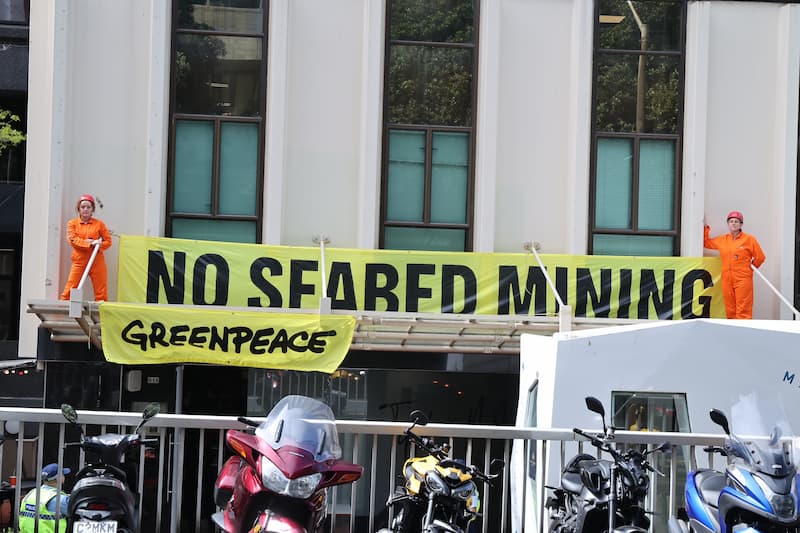
This is patently the case with the South Taranaki seabed mining proposal by Trans-Tasman Resources which was rejected by the Supreme Court. Independent judges who tested evidence in open court found that the applicant simply couldn’t demonstrate that their project wouldn’t cause immense harm, and the application was found in breach of the principles of Te Tiriti. The Government is pushing forward with giving TTR fast-track approval.
This open process in court is set to be overturned by closed Ministerial hand-picked panels who will make decisions with zero public scrutiny and zero requirement to meet environmental standards. It’s banana republic stuff.
Blocking renewable energy projects
New Zealand has many wind and solar farms that have been consented but not yet built. Many of these consents were awarded under the existing fast-track process. The consents are often owned by existing electricity generators who haven’t built the projects because the structure of the electricity market incentivises the monopoly players to keep new supply tight in order to maximise prices.
The Fast Track Bill won’t fix this design problem with the electricity market but it will block a major new offshore wind project.
There is a conflict between seabed mining and offshore wind in the south Taranaki Bight. Offshore wind companies have stated that if TTR’s seabed mining is approved it will prevent them going ahead with a large-scale offshore wind project. Bluefloat wind has already had to abandon its offshore wind generation project due to TTR getting access to the fast-track process.
Furthermore the offshore wind companies don’t want to use the fast-track process as it will undermine their community licence to operate.
The government claims that their fast-track process is necessary to get renewable energy projects consented. But this is patently false. There are already dozens of approved projects.
Donations scandal in the committee
The Select Committee was originally chaired by David MacLeod, a National Party MP from Taranaki. He oversaw the early part of the process, including choosing which of the tens of thousands of submissions opposing the Bill would be heard by the Committee. He has now been removed as it was revealed that he had received $180,000 in illegally undeclared donations.
So that’s bad, but it gets worse. Some of those undeclared donations he received were from a major shareholder in Trans Tasman Resources, the seabed mining company that is planning to use the fast-track bill process to overturn the Supreme Court’s rejection of its project. So some of the secret donations were from pretty interested parties…
But wait, there’s more. The Minister overseeing the Fast Track Bill, Chris Bishop, who will be the decision maker on whether a company can access the Fast Track process, was Chair of the National Party Campaign Committee at the last election. In this role he had knowledge of many of the donations coming into the Party.
So Bishop, while making decisions on applications to access the fast-track process, which is essentially a rubber stamp, is likely to know which applicants donated to the National Party campaign.
Democratic deficit and conflicts of interest
A key part of the Fast Track Bill is the list of projects that will automatically be entered into the fast-track process by virtue of being listed in a schedule to the Bill. The problem is that the list in the schedule in the Bill was empty when it was introduced.
The Government has since announced a list of 149 projects that will be listed in the schedule for immediate access to the fast-track process.
The Government developed this list in a parallel process, with no public or select committee oversight, and then plans to introduce this list as an amendment to the bill after it comes back from the select committee – during what is referred to as the committee stage of the process.
Hence public submitters had no opportunity to provide submissions on the list, and select committee had no opportunity to consider the list. This is a gross breach of proper democratic process.
The adhoc group that assembled the first version of the list for the Schedule, the Fast-Track Advisory Group (FTAG), is stacked with Government cronies and rife with conflicts of interest. As journalist Andrea Vance explained about three of the members:
This fast-track advisory group (FTAG) is chaired by David Tapsell, also chairman of the Pukeroa Oruawhata Trust Board, which received significant funding from the previous government’s Provincial Growth Fund (PGF), overseen by Jones.
Rosie Mercer is chief executive of Marsden Maritime Holdings, which owns a stake in Northport Ltd. Northport wants fast-track for its expansion. Jones is a vocal supporter of moving Auckland’s port to the Whangārei Harbour site. Mercer also served on the PGF’s independent advisory panel, selected by Jones.
Vaughan Wilkinson has a long association with Jones. A former Simunovich Fisheries executive, he is now a general manager at Sanford. The seafood company was invited by Bishop to apply for fast-track.
The group showed their level of commitment to understanding the environmental impact of the fast-track projects by approving 36 mining and quarrying projects in just one three hour meeting.
Corruption
Finally, this is a process which is wide open to corruption. Corporations pushing projects that cause environmental harm will want to use the fast-track process to circumvent environmental protection laws, with a virtual guarantee of approval.
The Infrastructure Minister, who controls entry to the fast-track, could be corruptly influenced by bribes in cash or in kind, by jobs for their families, by jobs for themselves post-politics, or by campaign donations. Advisers who provide access to the Minister will be equally incentivised to act corruptly.
Already, some of the companies that Ministers have invited to apply for fast-track have been revealed as their donors, and around $500,000 in donations to the ruling parties has been linked to fast-track projects. Mining company executives have had secret dinners with Ministers that were only revealed by accident and journalists asking questions. How many secret dinners will we never find out about?
Summary
This single bill will cause widespread harm. Fast tracked projects could include seabed mining, incinerators imposed on local communities, mining including the conservation estate, marine farms, industrial irrigation driving water pollution, etc etc etc. It is a war on nature but it is also diminishing democracy and opening the door to corruption.
As Alec Tang from KPMG put it, even from an economic perspective “putting short-lived profits ahead of environmental sustainability might give businesses an immediate sugar rush – but it jeopardises one of our core competitive advantages”, which is our clean green reputation. And if you want a salutary lesson on the long term impacts of fast-tracking polluting industries, then the Kawerau mill disaster provides it.
2. Dismantling freshwater protections
One of the truly remarkable things about Aotearoa is the scale of ground and surface water pollution and its impact on biodiversity and human health. This government’s war on nature is set to make it worse.
Things are pretty bad already
The Ministry for the Environment concluded in 2023 that ‘Most of our indigenous freshwater fish and freshwater bird species… are either threatened with extinction or at risk of becoming threatened’.
Intensive industrial dairy has poisoned the well across much of the South Island – Canterbury, Otago and Southland have poisoned rivers and groundwater.
Land and Water Aotearoa (LAWA) found in 2023 that ‘There is not a single monitored lake shallower than 10 metres in very good condition.’
[LAWA is a collaboration between regional councils, the Cawthron Institute, the Ministry for the Environment, the Department of Conservation, and Stats NZ and with the support of the Tindall Foundation and Massey University.]
In September 2024 LAWA released their updated data. Cawthron Institute Freshwater Ecosystems Manager and scientist with the LAWA project, Dr Roger Young said “Analyses of river and stream monitoring results show two-thirds of monitored sites have impaired ecological health. Sensitive species like mayflies cannot survive at these sites, leaving only hardy species like worms and snails.”
LAWA Lake Health Science Lead Dr Mafalda Baptista outlined that of the 160 lakes monitored by councils, around two-thirds are in poor or very poor health, with the worst results found in lowland shallow lakes. “Nearly all of New Zealand’s monitored lowland shallow lakes are in a poor or very poor health. These lakes are often surrounded by agricultural or urban development and face significant nutrient enrichment.”
Environment Canterbury in 2024 found nitrate levels increasing in 60% of the wells it tested. Many parts of the North Island with intensive dairying, such as the Waikato, are also heavily polluted.
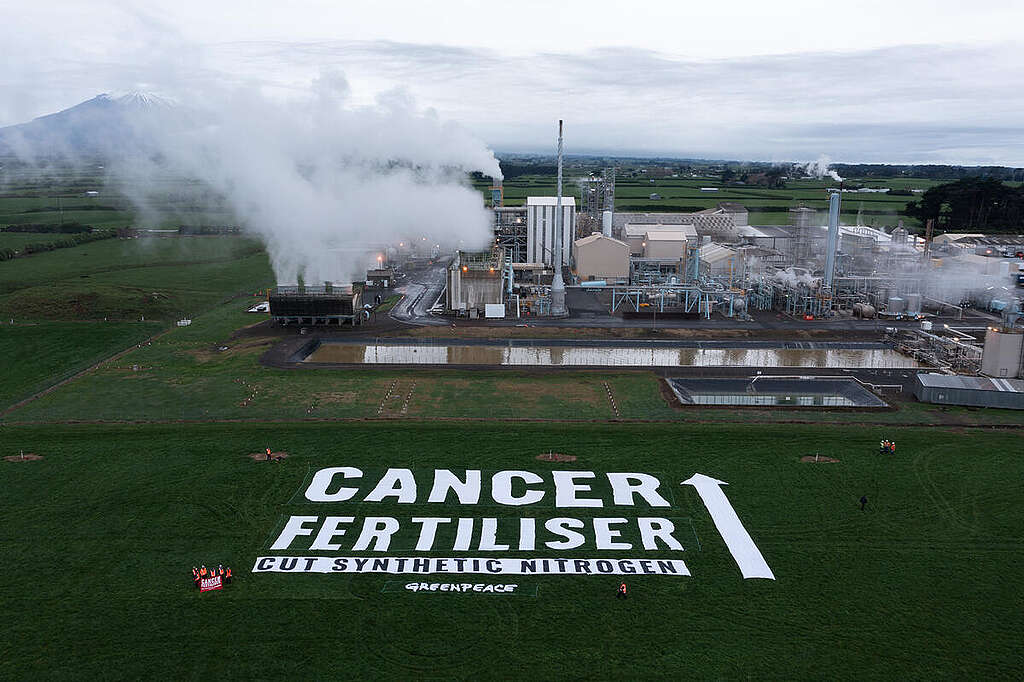
Half of Taranaki’s freshwater swimming spots were unsafe for swimming in their most recent testing.
In addition to these ecological impacts and impacts on recreation, hundreds of thousands of people in rural areas rely on private bores for their drinking water and these bores are increasingly contaminated with nitrate pollution.
One hundred rural schools have nitrate contamination of their drinking water.
In the absence of government monitoring and information, Greenpeace has been offering free water testing and released its know your nitrates map last year.
Under pressure from the environment movement and the majority of New Zealanders, the last government brought in a series of national regulations to place some constraints on agribusiness pollution, particularly the National Policy Statement on Freshwater Management. Agribusiness virulently and vociferously opposed these regulations.
The new government is setting about undoing these regulations with its war on nature.
Delaying regional freshwater plans
This began in December 2023 when Andrew Hoggard announced that regional councils would be given a further three years to update their freshwater plans to be in line with national regulations introduced by the last government. Andrew Hoggard is the former head of agribusiness lobby group Federated Farmers and now Associate Agriculture Minister
Regional freshwater plans must be consistent with national regulations. This delay gives the government time to weaken national regulations before councils need to implement plans based on them.
Replacing the National Policy Statement
To start the process of systematically weakening the national regulations, Hoggard also announced that they would be replacing the National Policy Statement on Freshwater Management (NPSFM) with a weaker version. When Otago Regional Council stated that they were planning to go ahead with their regional freshwater plan which they had spent years developing and which was consistent with the existing NPS(FM), the government introduced a late retrospective amendment to block the elected council from proceeding.
Removing rules on intensive winter grazing
This was followed up in April 2024 with the announcement of an amendment to the RMA which will remove the rules controlling intensive winter grazing. This Bill was introduced in June and the amended NPS published in November 2024.
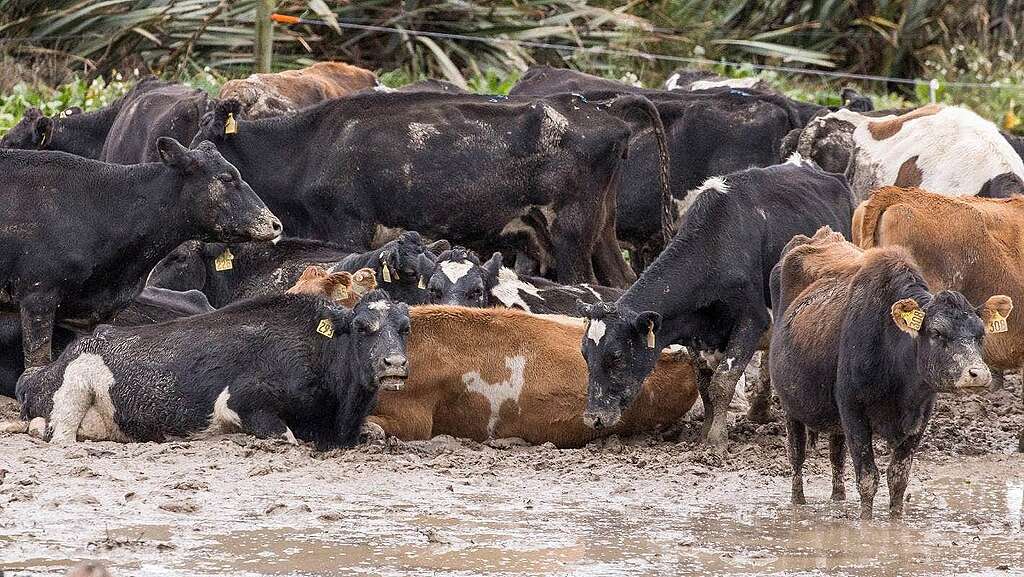
Intensive winter grazing is a widespread practice in Otago and Southland in which feed crops are grazed intensively through winter. This results in cows, often pregnant, living in mud sometimes up to their bellies with massive sediment flows into rivers and lakes. The sediment smothers freshwater ecosystems.
Putting irrigation ahead of safe drinking water and clean rivers
Also included in this amendment to the RMA is a direction to regional councils that a national regulatory instrument called Te Mana o Te Wai must not be applied to the assessment of individual resource consent applications.
Te Mana o Te Wai states that when making decisions on the allocation of freshwater:
- the needs of ecosystems come first,
- the needs of human health second,
- other commercial uses such as irrigation come third.
Te Mana o te Wai was the foundation for hearing panels rejecting applications to take water and cause more pollution in Hawkes Bay and Southland recently. Giant dairy polluter Fonterra and agribusiness lobby groups objected to this use of Te Mana o Te Wai and appealed the decisions.
The new Government aims to ensure that commercial users can get first consideration ahead of ecosystems or human health. This also means the lessons of the world’s biggest cryptosporidiosis outbreak in Havelock North are abandoned.
Freshwater Farm plans to be weakened or abolished
Alongside this Freshwater Farm Plans, will be weakened if not abolished altogether. In September the Government announced that agribusinesses would not need to provide Freshwater Farm Plans at all.
Freshwater Farm Plans are currently a requirement for agribusiness managers to plan to reduce their water pollution.
High Court decision on protecting freshwater to be overturned
The Government is moving to overturn a High Court decision which tightened the rules on discharging pollution to freshwater.
As you can see it is an intensive and extensive attack on the rules protecting freshwater as part of the broader war on nature. The effect of these rules will be to:
- allow more pollution to enter rivers, lakes and groundwater, largely from intensive dairy agribusiness;
- allow an increase in the size of the dairy herd; and
- increase climate pollution from this sector due to more cows and more fetiliser.
3. Removal of requirement to identify important areas of biodiversity
A large part of New Zealand’s remaining biodiversity is on private land with very little legal protection, which is leading to dramatic losses. This happens through wetland drainage, agricultural intensification, subdivisions etc.
Even as recently as 2009 Landcare Research reported that ‘Agricultural intensification over the past 10 years has led to the highest rate of native vegetation loss since European colonisation.’ Landcare Research was deeply unpopular with the government and agribusiness after making this finding.
In response to the widespread destruction of biodiversity on private land the National Policy Statement on Indigenous Biodiversity was introduced in 2023 after many years of discussion and consultation. The purpose is ‘to maintain indigenous biodiversity across Aotearoa New Zealand so that there is at least no overall loss in indigenous biodiversity’. A part of this national policy statement is a requirement for councils to identify ‘Significant Natural Areas’ in their area as a precursor to providing for their protection.
The idea of rules to protect biodiversity ran up against agribusiness. Agribusiness is the key driver of the ‘highest rate of native vegetation loss since European colonisation’, and hence Federated Farmers deeply opposed these rules.
As part of the RMA amendment bill introduced in June 2024, the Luxon Government plans to remove the requirement that councils identify ‘’Significant Natural Areas’’. This means biodiversity on private land will not even be identified let alone protected so its destruction can continue unabated.
4. Transport – more motorways, fewer cycleways and less public transport
Land transport is New Zealand’s second biggest climate polluter after agribusiness and yet this government has embarked on a radical policy agenda to increase pollution. The war on nature can be illustrated just by listing some of the initiatives:
Cuts to public transport, walking and cycling
The Government has cut funding to public transport, walking and cycling and increased funding to motorways as part of the 2024-27 National Land Transport Plan. It’s a highly ideological plan.
Funding to walking and cycling was halved from the previous national land transport policy statement when it was finally released in September. There is no money for new cycleways from central government.
Across the whole country this Plan will lead to more transport pollution and fewer trips by public transport walking and cycling. The final document stated that the investments in the plan would increase climate pollution. The Plan concludes:
“Together the analysis indicates that the total estimated NLTP expenditure is marginally weighted towards activities that are estimated to increase emissions particularly if all committed and probable projects are fully implemented in this or subsequent NLTP periods.” (NLTP p.91)
It also centralises much of the decision making around transport by preventing Councils from building cycleways alongside roads funded by central government money.
As part of the draft policy statement they removed climate as a requirement for consideration in transport decision making.
They have removed the subsidies for young people to use public transport at discounted rates, not only making the cost of living crisis harder for them and their families but pushing them towards car transport.
Faster cars means more death and injury
They are moving to force Councils to increase speeds around schools in spite of the mountain of evidence that this will lead to more injuries and deaths. This not only increases injuries, it discourages families from sending their kids to school by bike or foot because they know that speeding cars are more dangerous, which means more traffic.
This sits alongside the attacks on traffic calming measures such as raised pedestrian crossings. Many Councils are resisting the Ministers in Wellington, thank goodness, and are lowering speed limits anyway.
The Ministry of Transport’s former Chief Scientific Advisor, Professor Simon Kingham, pointed to all the evidence that higher speeds mean more deaths and injuries but was ignored. “Evidence has become an inconvenience,” he said.
Interisland ferry funding removal
They cut the funding for the interisland ferry terminals and cancelled the new ferries which have lower emissions. The ferries connect the train network as well as the roading network.
Kiwirail lost its Climate Bonds certification as a result and will repay the $350m it borrowed plus interest.
The cost to the Government of breaking the ship build contracts is thought to be in the hundreds of millions. The current cost of the whole project which will now deliver nothing is at least $484m. It’s an expensive mistake which a future government will have to fix.
Ending subsidies for low-emissions vehicles
They ended the subsidies for low emissions vehicles resulting in a collapse in EV and small car sales and once again Ford Rangers at the top of the list (guzzling gas and killing pedestrians and cyclists).
While we can’t simply replace traffic jams of internal combustion engine cars with traffic jams of electric cars, nonetheless EVs are part of the low carbon solution.
Removing council’s transport plans
The Government has moved to end Wellington’s transport plan with its focus on public transport walking and cycling and move towards more cars. There remains uncertainty as to the future solution but clearly they want more cars.
They abolished the Auckland Regional Fuel tax of ten cents a litre which was used mostly to fund the building of the first stages of the Eastern Busway and new commuter rail carriages. The Eastern Busway has now been reduced in size, as the fourth phase is unfunded.
They cancelled the Auckland light rail project. This project was troubled, with the previous government heading down the most expensive track, but there are still better options than just cancelling it.
Weakening fuel efficiency standards
The Government has announced that it will weaken the fuel efficiency standards on imported vehicles. This means New Zealanders will be locked into vehicles that cost more to run and have higher greenhouse emissions.
This will result in 58,000 fewer electric vehicles in 2035 according to officials’ advice and a further 2Mt of emissions. Transport Minister Simeon Brown directed officials not to consult with electric car importers and the Ministry for the Environment advice was excluded from Cabinet. Brown introduced the new weaker standards according to the timeline requested by petrol and diesel car importers, even though the old standards would have saved New Zealanders up to $4.7 billion over 20 years.
There’s even more, but you get the sense of it. In the middle of a climate emergency when we should be using transport investments to decrease climate pollution, the Government’s transport plan will actually increase pollution by their own estimates (and no doubt that is an understatement). Making climate change worse is part of their war on nature.
5. The war on dolphins, seals and marine life
The government’s war on nature is not only being fought on land. It extends to the oceans too.
Marine biodiversity
The majority of Aotearoa’s biodiversity is to be found in the oceans around us and the main driver of biodiversity destruction in the oceans is the fishing industry.
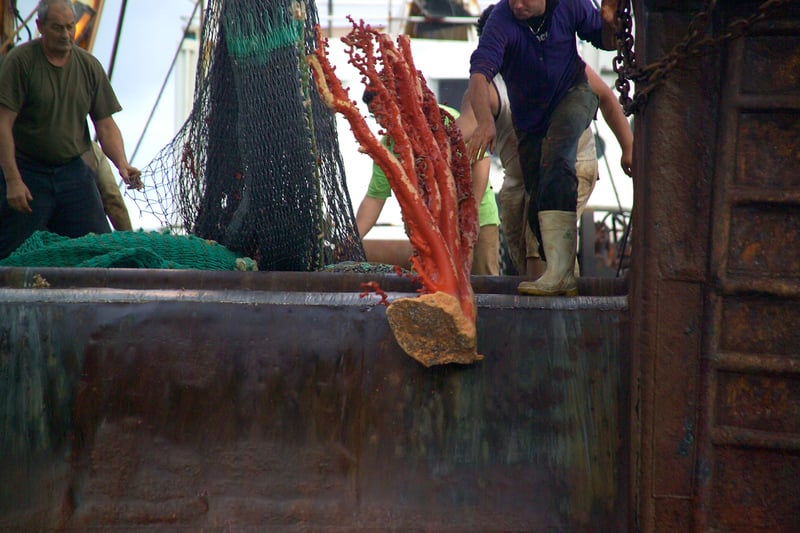
This is particularly the case for practices like bottom trawling, where heavy nets are dragged along the ocean floor destroying corals and sponges in order to catch fish near the bottom.
Over the last decade the environment movement and the majority of New Zealanders have been slowly pushing governments towards improving oversight of the fishing industry and restrictions on their most destructive practices. But the new government wants to go backwards…
South Pacific Regional Fisheries Management Organisation
There is an obscure inter-governmental organisation called the South Pacific Regional Fisheries Management Organisation (SPRFMO) that is meant to regulate fisheries in the international waters of the South Pacific.
The other countries in this forum are trying to restrict bottom trawling because of the immense harm it causes. As the last country actively bottom trawling in the international waters of the South Pacific, New Zealand is opposing these constraints, but under the last government had agreed to some modest restrictions.
The new government has changed its position, opposing protection of vulnerable coral habitats from trawling, and does not support any kind of restrictions on bottom trawling.
The New Zealand government Minister Shane Jones wants to weaken the rules that require fishing vessels to move on if they bring up coral in their nets. A New Zealand vessel which is linked to donations to Jones was caught dragging up coral.
Cameras on boats
After the various scandals led to a 2016 Ministerial Inquiry into the Ministry of Primary Industries’ regulation of the fishing industry, the then National Party Government agreed to implement cameras on boats. Cameras on boats better monitor illegal behaviour such as fish dumping, dolphin killing etc.
These cameras were finally rolled out over the last few years to about 120 fishing vessels and have so far resulted in a dramatic increase in reporting of dolphin and bird killings and fish dumping. They led officials at the Ministry for Primary Industries to introduce new regulations to lower the number of birds drowned on hooks, which is one of the few positive developments which the Minister was unable to stop.
Shane Jones, Minister of Fishing and recipient of seafood industry campaign donations, doesn’t like the cameras and wants to review them. But he has been forced to continue with their rollout. He has canvassed the option of handing them over to Fishserv, the fishing industry owned company that oversees the Quota Management System.
Jones is also planning to reduce observer coverage and allow fishing boats to discard more of the sea animals they kill in trawl nets. Currently fishing boats need to return all their catch to land, which incentivises them to avoid killing sea creatures they don’t want to sell. Once they can discard them at sea they need not bother so much about avoiding killing them.
Introducing commercial fishing in Hauraki Gulf ‘high protection areas’
The Government has decided to amend the Hauraki Gulf Marine park bill to allow commercial fishing in some of the ‘high protection areas’. The National Party had previously promised to pass the Bill. But after lobbying from Seafood NZ, which represents commercial fishing companies, Conservation Minister Potaka changed the bill to allow commercial fishing in the ‘high protection areas’ that were specifically designed to exclude all fishing. Department of Conservation officials warned that the decision would have detrimental effects on biodiversity.
Cuts to science
The Minister cut the levy which pays for some of the marine science that underpins the quota management system. This means that decisions on setting the quota for orange roughy for instance are based on data that is ten years old. Orange roughy fisheries have collapsed in the past due to overfishing.
Increasing catch limits and killing more seals
In spite of the collapse of numerous fisheries the Minister of Fisheries decided to increase catch limits.
The population of one of the species, the southern bluefin tuna, has collapsed 92% since the height of fishing madness in the 1960s. This follows the collapse of orange roughy fishery, hoki, scallops, crayfish etc etc.
And with regard to killing endangered New Zealand sea lions the new Government decided there would no longer be an upper limit on the number of sea lions that the fishing industry can drown in trawl nets.
And as if reading from a script, Luxon complained when yacht racing was suspended to protect endangered Hectors dolphins.
This will no doubt be the tip of the iceberg as more change emerges from the Minister.
6. Increased climate pollution
I have already outlined many policies that will increase climate pollution. The Government’s transport policies will result in more car and truck transport emissions and the freshwater policies will allow for more dairy cattle and hence dairy emissions. Also the seabed mining will block offshore wind generation and the abandonment of the big battery project will make it harder to decarbonise the electricity system.
But there’s more.
Restarting offshore oil and gas exploration
The global battle against fossil fuels has both a supply and demand side.
On the demand side are the battles around fossil fuel electricity generation and internal combustion engines vehicles.
But the supply side is also critical because, as the International Energy Agency found back in 2021, we can’t afford to bring more fossil fuel supply online if we are to avoid catastrophic warming. The head of the IEA said: “If governments are serious about the climate crisis, there can be no new investments in oil, gas and coal, from now – from this year.” We know that once oil companies spend vast amounts to find and develop new fossil fuel reserves they will continue to sell them into the global fossil fuel market.
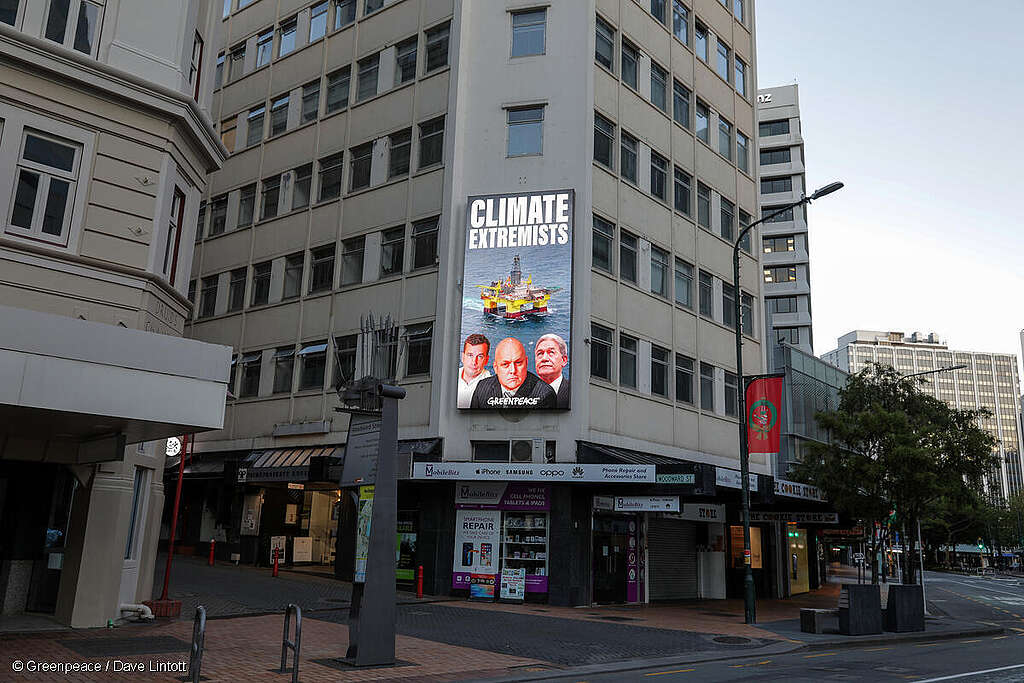
Hence the decision by the New Zealand Government in 2018 to stop issuing new offshore oil and gas exploration permits was a critical step forward in the global fossil fuel battle. Other countries have now joined this movement. Denmark agreed to stop new oil and gas exploration in the North Sea in 2020 as did the new Government in Britain. And there is a growing group of governments and civil society groups supporting a Fossil Fuel Non Proliferation Treaty.
The announcement by the Luxon Government that it will restart the issuance of offshore oil and gas exploration permits is a global leap backwards. Government officials estimate that if the Government does successfully restart oil and gas exploration it will result in another 51 million tonnes of climate pollution by 2050. The Government gave the public just four working days to make a submission to the select committee on the bill to restart oil and gas exploration. Redacted advice from the Ministry of Foreign Affairs and Trade stated that the bill was likely to breach the environment provisions of recent free trade agreements (such as with the EU).
The Government is looking to subsidise the industry by providing insurance against future policy changes.
They are also looking to remove the requirement that oil companies provide a clean up bond to cover future clean up costs. These clean up bonds were introduced after the Tamarind oil company went bankrupt leaving the taxpayer with a $443m bill to clean up after them.
In addition the Government is looking to subsidise exploration by guaranteeing to purchase future gas supplies at a fixed price.
Weaponising electricity prices to justify more fossil fuels
The failure to build sufficient new renewable generation has led to high wholesale electricity prices in August 2024. The grid operator Transpower, the regulator the Electricity Authority, and the Ministry of Business Innovation and Employment have all released analyses of the electricity market. These analyses point to the rapid growth of renewables and storage as the cheapest way to meet New Zealand’s growing electricity needs.
However, the Government is falsely claiming that the recent electricity shortages are linked to the 2018 decision to stop issuing new permits for oil and gas exploration.
This is an argument that is transparently false:
- It takes a decade or more from seeking a permit, to possibly finding gas, to developing the gas field, and bringing it onstream if that is feasible
- There is no guarantee that gas will be found
The real challenge and opportunity for New Zealand is to decarbonise its energy system.
In addition to trying to restart oil and gas exploration, the Government is pushing to build a liquified gas import facility. This is in spite of the high cost of the facility, the high cost of the LNG gas, and the fact that using LNG to generate electricity is about as bad for the climate as using coal.
Oh yes they also plan to make it easier to start coal mines. Indeed they plan to fast-track them.
Changing the way methane warming is measured
Methane is a superheating gas – over 20 years it is 80 times more potent than carbon dioxide in causing planetary warming and its concentration in the atmosphere is rising rapidly.
It has driven about 30% of all warming since the industrial revolution and the biggest anthropogenic source of methane is agriculture. However it is relatively short lived and hence scientists have identified cuts to methane emissions as a critical pathway to avoiding climate disaster.
However, the global livestock agribusiness lobby does not want to cut methane emissions and hence has a policy agenda to change the way that the climate warming of methane is measured. This is to make it look like methane causes less warming than it really does. Agribusiness likes to focus on ‘no additional warming’ levels of methane emissions, grandfathering existing methane emission levels.
Technically they want to move away from the global standard accepted by the Intergovernmental Panel on Climate Change, a standard called GWP100. They want the world to adopt a standard called GWP*. Under GWP* New Zealand’s agribusiness methane emissions can be redefined as not causing ‘additional warming’ because they are static! Agribusiness likes GWP* because they won’t need to cut emissions.
The New Zealand agribusiness lobby groups are part of this project, and now they have the former head of Federated Farmers in Government as Associate Agriculture Minister, they have their chance to push it. The Government has established a panel to identify the level of methane emissions that would be consistent with ‘no additional warming’. Surprise surprise.
Both the Climate Commission and the Parliamentary Commissioner for the Environment have concluded that there is no basis to review the science around the measurement of the warming effect of methane. But that won’t stop the Government giving it a go.
Cutting $2.4billion out of Climate Funding
Over the December 2023 mini budget and Budget 2024 the Government has cut $2.4 billion from the Climate Emergency Response Fund over four years. This has come from cuts to the Climate Commission, public sector climate programmes, reduced support for supporting permanent native forests (instead of pines), and other areas. The money is being used to fund tax cuts.
But more cash for magic bullets
The New Zealand Government has given hundreds of millions of dollars to look for magic bullets to reduce methane emissions from dairy cattle and other livestock. So far no magic bullets have been discovered but the new Government has thrown another $18m at this greenwashing.
The purpose of all this is to avoid having to cut emissions by doing things that actually work like reducing fertiliser use and stocking rates.
Zero Carbon Act – greenwashing law retained
It is noteworthy that a Government conducting a war on climate and biodiversity policy has kept the Zero Carbon Act (ZCA) in place. But there is a good reason for that – the ZCA was largely a greenwashing exercise as was revealed once it was tested in court.
When Lawyers for Climate Action went to court to try to use the ZCA to actually force emissions cuts on the government, the Climate Minister, James Shaw, went to court to argue that the Paris Agreement climate goals referenced in the ZCA were merely ‘aspirational’ and not binding on the New Zealand government.
This was in spite of Shaw saying publicly that the ZCA made the Paris target legally binding on the government. Shaw won the case and the climate lawyers lost. The new Government is very fond of the ZCA because it is just ‘aspirational’.
No price on agribusiness climate pollution
One final piece of the puzzle is pricing agribusiness emissions in order to financially reward emission reductions. This was delayed throughout the course of the last government by the He Waka Eke Noa process – a collaboration between polluters and the government to come up with a pricing mechanism that polluters would accept. Of course agribusiness would never accept any pollution price (polluters never do) and He Waka Eke Noa was always a tactic of predatory delay by agribusiness. Even so the new Government has disbanded it.
The Government legislated to make sure agribusiness emission will not be priced under the Emissions Trading Scheme. The Climate Commission has made it clear that pricing agricultural emissions is critical to actually cutting their emissions.
ETS Collapses
The Government has stated that the Emission Trading Scheme is the cornerstone of their climate policy. Yet the auction in December 2023 failed, resulting in a loss to the Government of $900m. The ETS auction in June 2024 also resulted in zero bids. The auction in September 2024 also resulted in zero bids. This was because of the oversupply of credits resulting in lower prices than the price the Government was offering to sell carbon credits at auction. Market participants have rightly understood that the Government’s climate policies are not making the price of carbon rise!
Govt Emissions Reduction Plan Farce
In July the Government released its draft Emissions Reduction Plan. The Plan pins its hopes on three legs: new technology emerging to cut cow methane emissions, carbon capture and storage, and massive pine plantations sequestering all the carbon produced by the list of Government pro-pollution policies. Even then the Plan fails to meet New Zealand’s climate commitments.
Carbon capture and storage is a failed industry strategy to avoid cutting emissions. The Government’s own advice said that even if the technology worked it would increase emissions.
The draft ERP was slammed by the Parliamentary Commissioner for the Environment, former National Party Minister Simon Upton. Upton focused on the gamble of relying on pine plantations to soak up emissions and relying on the ETS.
The Climate Commission criticised key ideas of the plan such as that agribusiness can’t cut emissions and that cuts in emissions in New Zealand would somehow lead to leakage of emissions offshore. They also criticised the idea that the ETS alone would drive down transport emissions, as demand is relatively insensitive to the small price increase of the ETS and transport cuts need other tools such as efficiency standards. The Commission cast doubt that the Plan would even meet the reduction targets in the very first period (2022-25).
Etc etc etc
There are so many initiatives to increase greenhouse gas emissions that it’s hard to list everything:
- They are considering getting rid of public sector carbon neutrality.
- They abolished the Government Investment in Decarbonising Industry fund.
- They cut the funding to climate science at NIWA.
- They floated the idea of reducing insulation standards for new housing, while overestimated the cost of meeting the standard.
- They are changing the Companies Act to remove references to Directors’ ability to consider environment, social and governance issues when making decisions.
- They delayed by another year the requirement for large firms to disclose the carbon pollution.
- They abandoned building regulations that would have cut emissions in spite of official advice that this would increase emissions.
And of cours, agribusiness lobby group Federated Farmers was pleased that the Act party proposed a bill to stop councils from considering climate change when making resource consenting decisions.
New Zealand Set to Renege on its Paris Climate Commitment
The New Zealand Government has committed under the Paris Climate agreement to reduce New Zealand’s net greenhouse gas emissions by 50% by 2030 compared to New Zealand’s gross emissions in 2005.
However, its latest Emission Reduction Plan has it about 100 Mt CO2e short of meeting that target. In the absence of domestic measures to cut emissions, the only other option is to buy dodgy carbon credits from offshore.
But the Government has indicated it won’t do that either. The only conclusion we can draw from this is that it plans to renege on its Paris Climate commitment (which incidentally is a breach of the EU/NZ Free Trade Agreement).
The Government plans to undermine global efforts to avoid catastrophic climate change.
7. Once more dear friends into the breach
So that is my read of the state of play of one year of the Luxon Government’s War on Nature. The sad truth is that the Government is immune to science and evidence – which is why they removed 400 scientific roles since they formed the Government.
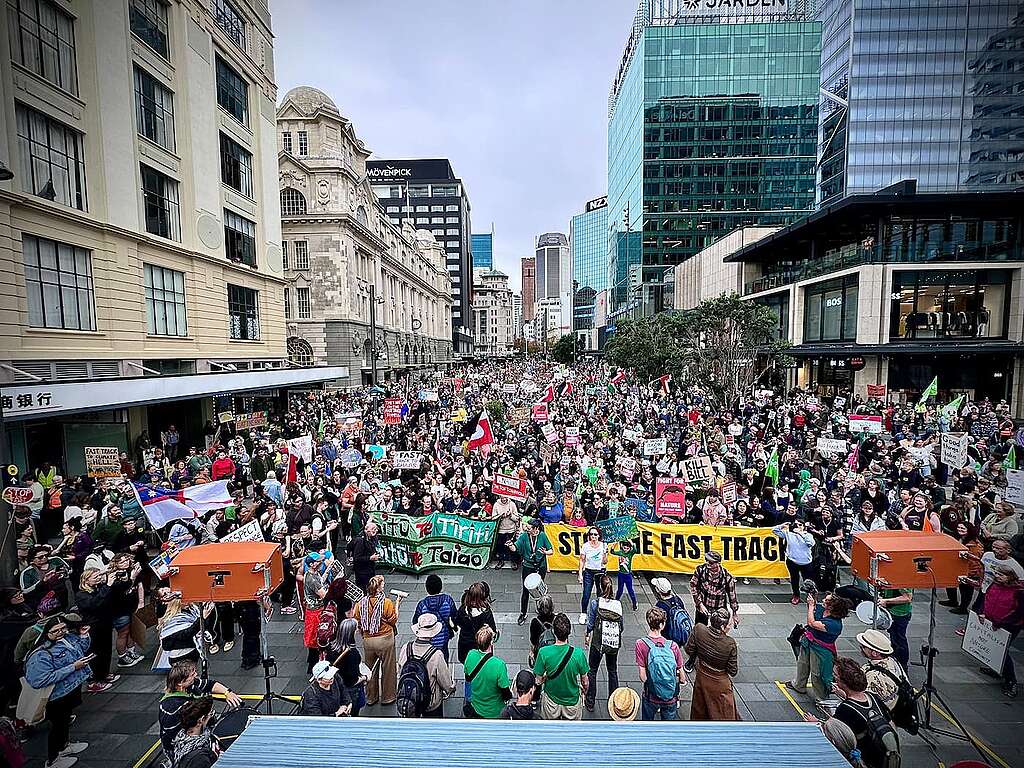
There are some things the Government will struggle to achieve in spite of their worst intentions, such as reversing the ban on new oil and gas exploration permits because oil companies will be leery of coming back knowing that they will face massive civil society resistance (again) and regulatory uncertainty. The cameras on boats programme looks safe for the moment.
Any attempts to use the fast-track law to drive through projects like seabed mining will likewise face determined community opposition.
We will need to mobilise people power to challenge the government’s War On Nature and to challenge any corporation that tries to use the new fast-track process. We will need to directly target corporations that trade on New Zealand’s clean green’ marketing in the food exporting and tourism sectors. We will need to look at how the Environment Chapter of the EUNZ Free Trade Agreement can be used to pressure the Government. It is a bit bleak after six years of a Government that claimed to take climate and biodiversity seriously but delivered so very little.
But the truth is that real gains only ever come out of a mobilised civil society and achieving a mobilised civil society is exactly what we have to do. It was ultimately the community fighting back that brought the reign of Smaug to an end.
On Saturday the 8th of June we came together in our tens of thousands in the March for Nature. We showed the world, and ourselves, our determination to stand up for nature. And that determination will not only stop many of the attacks on nature from the current government but will lay the foundation for future gains.
So get into it!
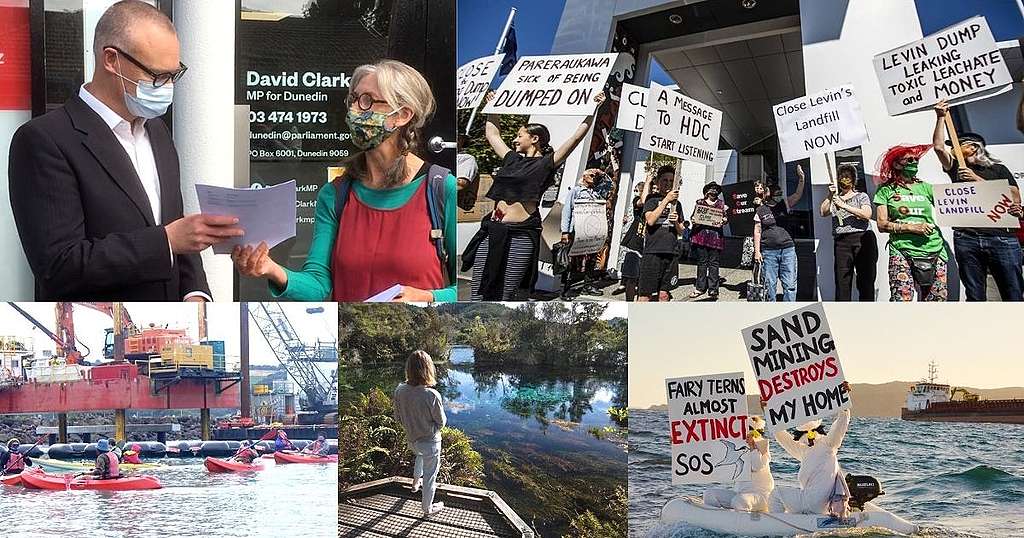
Put your hand up to volunteer for Greenpeace Aotearoa! Sign up today and take action for the planet
Take Action
